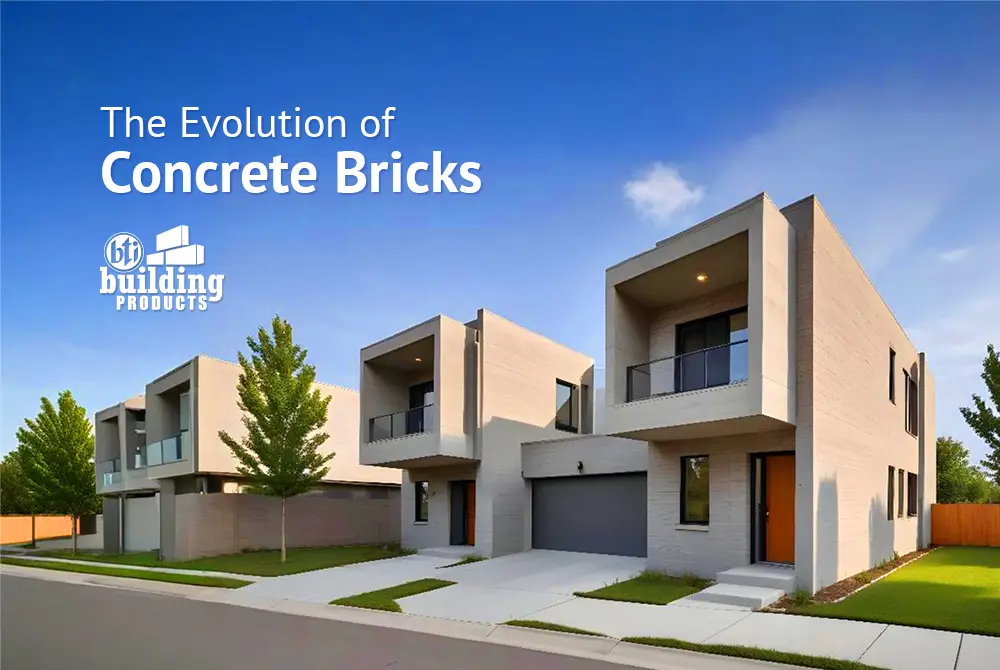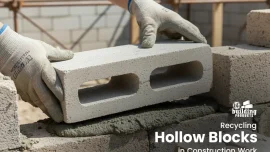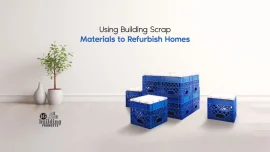
The Evolution of Concrete Bricks: Then and Now
Concrete bricks have been a fundamental component of construction for many years, offering robustness, longevity, and adaptability. Their utilization has progressed over time, and they currently serve a vital function in contemporary architecture and design. This blog will examine the evolution of concrete bricks, their present-day uses, and some inventive alternative applications. Today, let us delve into the progression of these indispensable building materials from their inception to their current significance in modern construction.
The Early Days of Concrete Bricks
Concrete bricks became a popular construction material in the early 1900s because of their cost-effectiveness and ease of manufacturing. Unlike traditional clay bricks, concrete bricks are produced from a blend of cement, sand, and water, which solidifies into a sturdy mass. This method provides better regulation over the dimensions and form of the bricks, resulting in more consistency in construction endeavors.
Concrete bricks were first utilized for load-bearing walls and structural components due to their capacity to endure heavy loads and fire resistance, making them a desirable choice for construction. Nevertheless, the early versions of concrete bricks were frequently lacking in visual appeal, mainly focusing on functionality rather than aesthetics.
The Modern Use of Concrete Bricks
Nowadays, concrete bricks have experienced notable progress, establishing themselves as a favored option for a variety of contemporary construction endeavors. The current utilization of concrete bricks goes beyond just structural purposes, encompassing both practical and visual functions. Here are a few essential elements of their present-day application:
Aesthetic Versatility
Contemporary concrete bricks are available in a diverse array of colors, textures, and finishes, enabling architects and designers to craft aesthetically pleasing exteriors and interiors. These bricks have the ability to replicate the look of natural stone or conventional clay bricks, offering a combination of strength and attractiveness.
Sustainable Construction
Concrete bricks are recognized as a sustainable choice for eco-friendly construction projects because of their extended durability and ability to be recycled. Furthermore, improvements in manufacturing techniques have minimized the environmental footprint associated with producing concrete bricks.
Energy Efficiency
Concrete bricks provide exceptional thermal mass, which aids in controlling indoor temperatures and decreasing energy usage. This quality renders them a perfect option for energy-efficient architectural plans.
Durability and Low Maintenance
Concrete bricks are well-known for their strength and ability to withstand weathering, pests, and fire. Their minimal upkeep needs make them a practical choice for extended periods of use.
Alternative Uses of Concrete Bricks
Concrete bricks are being creatively repurposed in a variety of non-traditional construction projects, showcasing their versatility and practicality. Here are a few innovative examples of how these bricks are being utilized:
Landscaping and Hardscaping
Concrete bricks are commonly utilized in landscaping endeavors to construct walkways, garden boundaries, and retaining structures. Their robustness and ability to withstand various weather conditions render them ideal for outdoor use.
Furniture and Decor
Concrete bricks are being utilized more and more by designers and DIY enthusiasts to craft one-of-a-kind furniture and decorative items. Whether it’s a chic coffee table or a rugged bookshelf, concrete bricks bring an industrial allure to interior design.
Public Art and Installations
Artists and architects are incorporating concrete bricks into public art installations and urban designs. Their modular nature allows for creative expression and innovative structures that can transform public spaces.
Temporary Structures
Concrete bricks are suitable for constructing temporary structures for events, exhibitions, and pop-up shops due to their simple assembly and disassembly process, making them a great option for short-term installations.
The transformation of concrete bricks from a utilitarian construction material to a flexible and visually appealing building option demonstrates their lasting significance in the realms of architecture and design. The contemporary application of concrete bricks underscores their versatility, eco-friendliness, and capacity to improve both the strength of a structure and its aesthetic charm. As we persist in discovering inventive methods to employ solid concrete bricks, their contribution to molding the future of construction and design remains essential.
Whether you’re planning a new building project or looking for creative ways to incorporate concrete bricks into your design, these robust and versatile materials offer endless possibilities. Embrace the evolution of concrete bricks and discover how they can bring strength, beauty, and sustainability to your next project.




